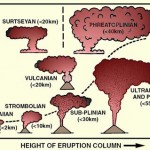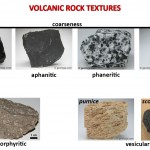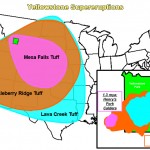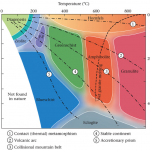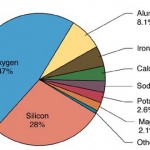Most geology students know what a basalt or gabbro is, but occasionally even introductory texts will refer to different mafic rocks and ultramafic rocks. This list very briefly describes a few of these, just enough to differentiate between them based on composition and formation.
Mafic (45–52% silica)
Intrusive
- Troctolite: mostly calcium-rich plagioclase; think of it as olivine-rich anorthosite or a pyroxene-depleted gabbro
- Anorthosite: over 90% plagioclase
- Norite: calcium-rich plagioclase (labradorite), orthopyroxene, and olivine
Subvolcanic
- Diabase (dolerite): mafic subvolcanic rock (formed at shallow depth within the crust) with composition of basalt/gabbro (i.e. mostly pyroxenes); fine but visible texture of lath-shaped plagioclase crystals in a matrix of clinopyroxene
Extrusive
- Basalt: mostly plagioclase and pyroxenes; magnesium, iron, and calcium oxide each constitute 5-15% by weight
- Picrite: high-magnesium, olivine basalt with 20-50% olivine; used by itself, picrite refers to the basalt variety, but olivine-rich gabbro can be called picrite gabbro
- Eucrite: basically, basalts found on asteroids and meteors; have reduced, metallic nickel-iron (Ni-Fe) instead of iron oxide minerals
- Boninite: high Mg; formed in fore-arc of subduction zones; depleted in incompatible trace elements
Ultramafic (less than 45% silica)
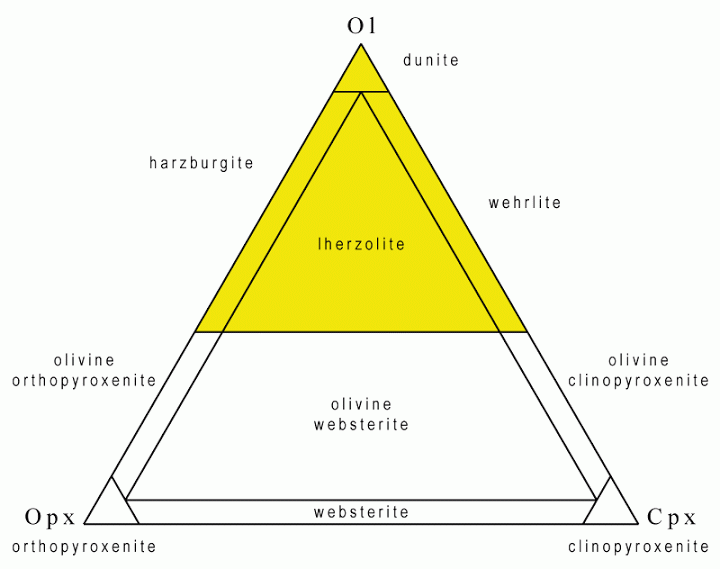 Intrusive
Intrusive
- Peridotite: ultramafic intrusive rock with mostly olivine and pyroxene
- Lherzolite: 40-90% olivine
- Dunite: over 90% olivine
- Harzburgite: olivine and orthopyroxene with no more than 5% clinopyroxene
- Websterite: over 50% pyroxene
Subvolcanic
- Kimberlite: sometimes contains diamonds
Extrusive
- Komatiite: ultramafic extrusive rock with mostly magnesium-rich olivine, calcium-rich plagioclase, and pyroxene; common during the Archean, when the earth was much hotter

